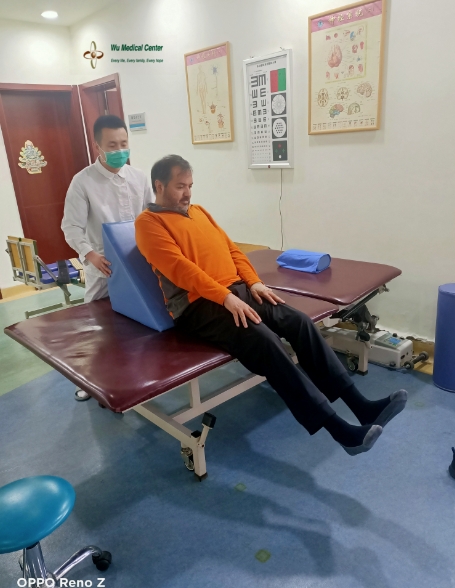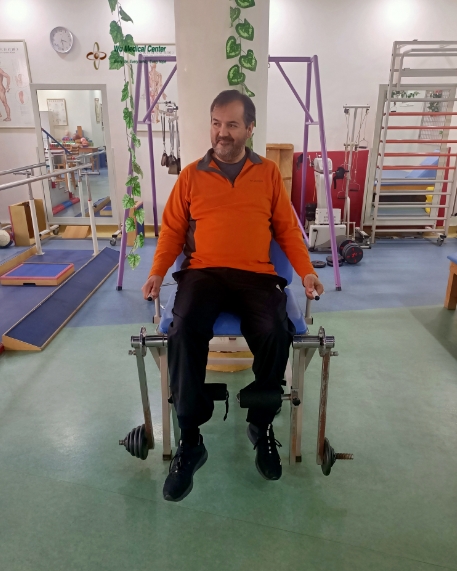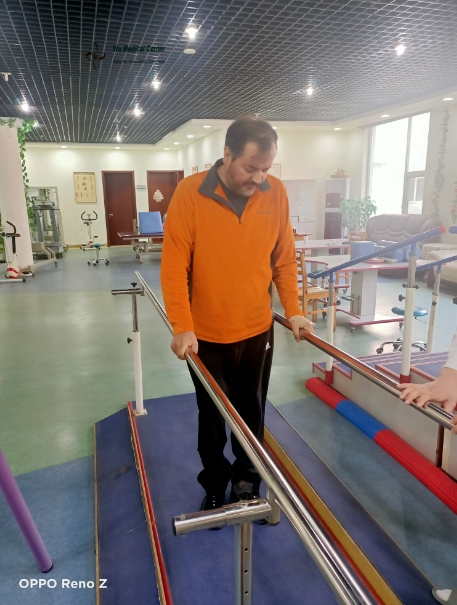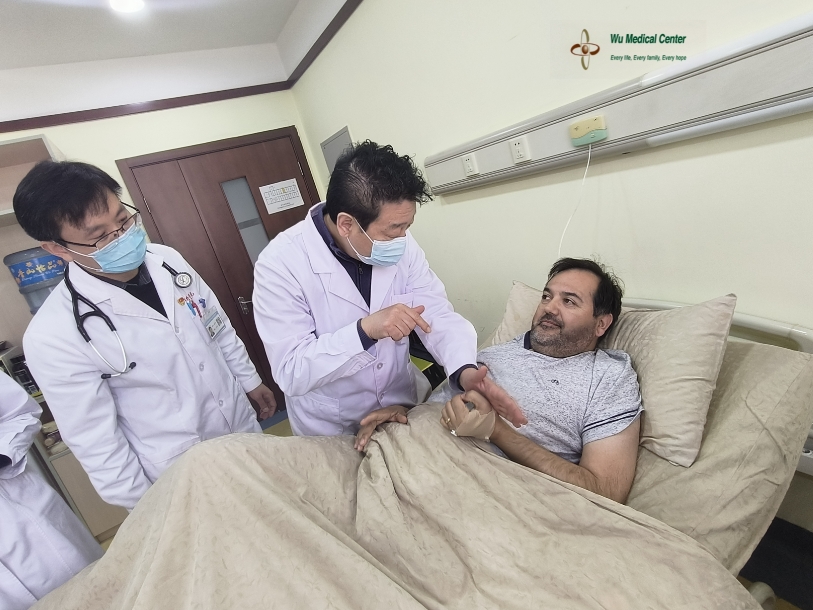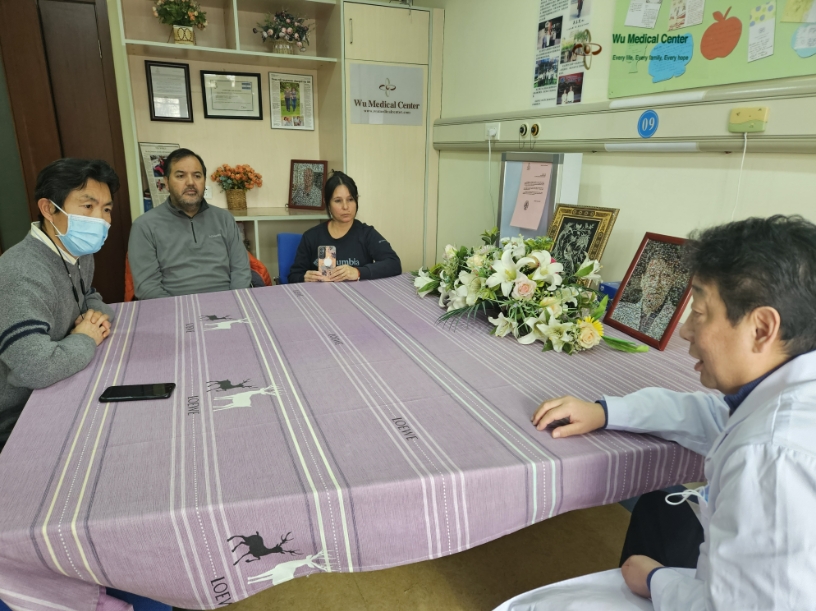Christian Alberto-Amyotrophic Lateral Sclerosis (ALS)-(Chilean)
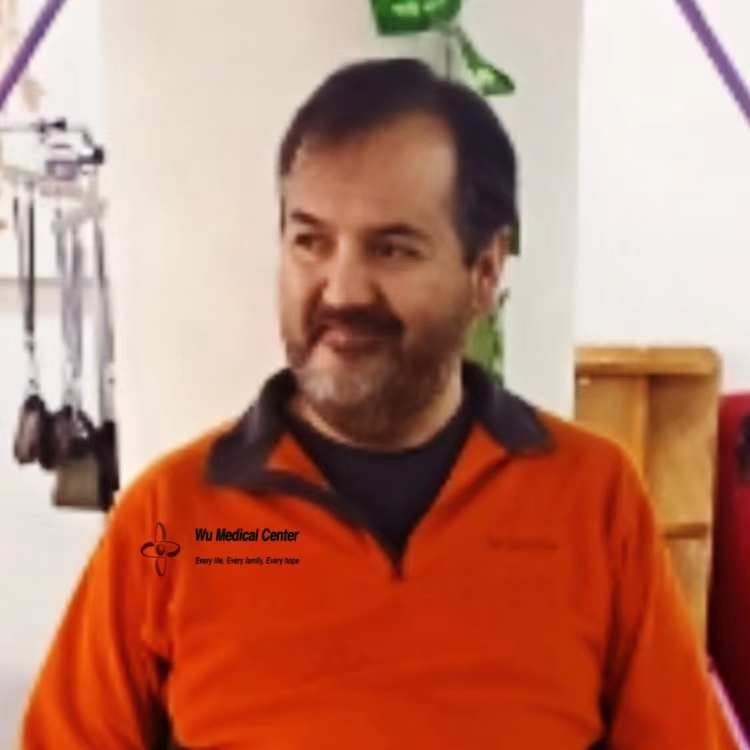 Patient Name: Christian Alberto
Patient Name: Christian Alberto
Gender: Male
Age: 50 years old
Nationality: Chilean
Diagnosis: Amyotrophic Lateral Sclerosis (ALS)
Admission Condition:
The patient presented with weakness in both lower limbs and difficulty walking without any apparent cause 11 months ago. Subsequently, weakness also developed in the upper limbs, with the left side being more severely affected. Muscle atrophy and fasciculations were observed. The patient did not experience difficulty swallowing, choking while drinking, or respiratory distress.
Physical Examination on Admission:
His pulse: 66 beats/min. His respiration: 20 breaths/min. His blood Pressure: 116/73mmHg.The patient's physical development was normal, and his nutritional status was moderate. No cyanosis or congestion was observed in the lips and throat. His chest showed normal respiratory movements, and clear breath sounds were heard in both lower lungs without any dry or wet rales. His heart sounds were strong and regular, and no murmurs were heard in the valve areas. His abdomen was soft, and no enlargement of the liver or spleen was palpated. No edema was present in his lower limbs.
Neurological Examination:
The patient was conscious and oriented. His speech was clear. His calculation, memory, and orientation were normal. The diameter of both pupils was 3mm, and they responded sensitively to light. His eye movements were flexible without nystagmus. His nasolabial folds were symmetrical, and the tongue was in the midline without signs of atrophy. Tongue movements were normal. The patient could puff out his cheeks, chew normally, and drink water without choking. The soft palate could be elevated with strength on both sides, and the uvula was in the midline. His neck rotation was strong. His left shoulder joint showed weakness and limited movement, while his right shoulder could shrug with strength. The muscle strength of his left upper limb was Grade 2, and the grip strength was Grade 2. The biceps and triceps muscle strength on his left side was poor, with limited flexion and extension, and his left upper arm could not be lifted off the bed. The muscle strength of his right upper limb was Grade 3, and the grip strength was Grade 3+. The muscle strength of his left lower limb was Grade 3-, and the leg bending support could only be maintained for 5 seconds. The muscle strength of his right lower limb was Grade 3+. The strength of his waist and abdominal muscles was weak, and the patient could not sit up independently. The muscle tone in his both lower limbs was basically normal. Muscle atrophy was observed in his all four limbs, with significant atrophy in his left upper and lower limbs. Fasciculations were present in the proximal muscles of his all four limbs. Sensation was normal in his all four limbs. The tendon reflexes were diminished. No pathological signs were observed. The finger-to-nose test and rapid alternating movements with his left hand were slow and clumsy, and the finger-to-nose test could not be completed due to muscle weakness. The finger-to-nose test and rapid alternating movements with his right hand were relatively intact. The heel-to-shin test with the left lower limb was unstable due to muscle weakness, while the heel-to-shin test with his right lower limb was satisfactory. No meningeal irritation signs were present.
Treatment Process:
The patient was diagnosed with "Amyotrophic Lateral Sclerosis" upon admission. During hospitalization, the patient received neural stem cell therapy to repair motor nerve damage, mesenchymal stem cell therapy for nutrition, endocrine and immune support, and adjunctive treatment with medications such as Edaravone, Riluzole, and neurotrophic factors for CAST therapy. Comprehensive rehabilitation therapy was also provided.
Post-Treatment:
The patient's motor function significantly improved, with increased muscle strength in his upper limbs. The muscle strength of his left upper limb improved to Grade 3, and his grip strength improved to Grade 3. The range of motion of his left shoulder joint significantly increased, and the pain decreased. The muscle strength and grip strength of his right upper limb reached Grade 4. The muscle strength of his left lower limb improved to Grade 4, and his leg bending support function significantly improved from 5 seconds to 20 seconds. The muscle strength of his right lower limb was Grade 4+. The strength of his back and abdominal muscles improved, and the patient regained the ability to independently turn over and sit up. The speed and flexibility of the finger-to-nose test with his left hand improved compared to admission, and the completion rate of the heel-to-shin test with his both lower limbs increased, with improved stability and accuracy. The patient's energy, physical endurance, balance, and flexibility improved significantly.
